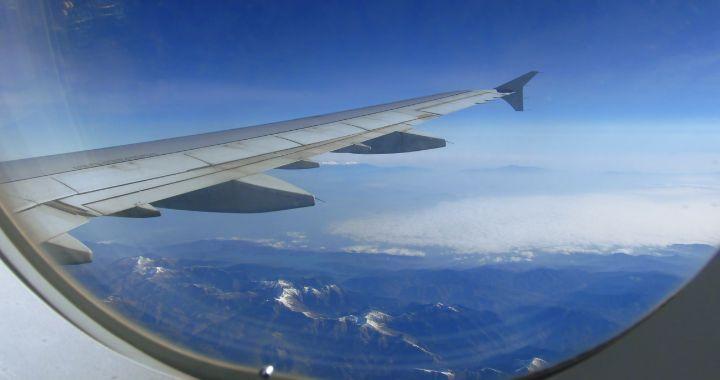When traveling, there are different types of commercial flights available like domestic flights, international flights, and chartered flights. However, not everyone is familiar with the differences between these options. Today, this post will focus on explaining what a domestic flight is and providing additional details about this type of in-country air travel.
Before you dive in, be sure to check out our range of Jetbeds. Made in the USA, Jetbeds are the most comfortable way to fly!

What Is A Domestic Flight?
A domestic flight, also sometimes referred to as a local flight, is any commercial flight that departs and arrives within the same country. Domestic flights allow travelers to fly between destinations that are located entirely within the borders of a single nation, such as traveling from New York City to Los Angeles within the United States.
Some examples of domestic flights include routes between major cities like flying from Chicago to Atlanta, Seattle to San Francisco, or Houston to Miami. Domestic routes also include shorter hopscotches between smaller regional airports. As long as the entire flight is contained within one country’s airspace, it is considered a domestic itinerary.

What Is The Average Speed of Domestic Flights?
The average speed of a domestic commercial passenger flight within the United States ranges between 550-600 miles per hour. Factors like aircraft type, winds, and weight affect exact airspeed. Lighter regional jets optimized for short hauls may fly somewhat slower, while larger narrowbody and widebody jets configured for transcontinental routes exceed 500 mph. Tailwinds can also increase ground speed while headwinds have the opposite effect.
Overall, domestic speeds are typically slower than comparable international routes of similar distance.
Altitude of Domestic Flights
In the United States, most domestic flights cruise at an altitude between 30,000-41,000 feet. This altitude range is governed by Federal Aviation Administration (FAA) regulations and ensures proper separation between aircraft while balancing fuel efficiency. Shorter shuttles may descend slightly lower due to shorter flight times, while transcontinental itineraries stretch the upper limits. Weather, winds, and aircraft weight also influence the optimum altitude selected by the pilot.

Domestic Flight vs International Flights
There are some key differences between domestic and international flights:
Distance
Domestic routes are typically shorter hops of 1-5 hours compared to long-haul international journeys of 5+ hours. The shorter duration of domestic flights means flyers are more prone to temporary fatigue due to factors like changes in air pressure, low cabin humidity levels, and disruption of circadian rhythms which we also addressed in the post “Why Does Flying Make You Tired?” Good rest on the flight is important to arrive at the airport feeling refreshed.
Documentation
Domestic travel within one’s own country does not require a passport or visa, just a government-issued photo ID. International flights require valid travel documents. You can read more about documentation requirements for domestic travel HERE.
Security
Security screening is similar but international airports have extra customs checkpoints on arrival. Business travelers prefer the flexibility of domestic networks to connect multiple cities for meetings and deals. Flying between American hubs like New York City to Los Angeles numerous times monthly is common in industries from tech to finance. Checking baggage is less crucial on quick domestic trips.
Carriers
Both major airlines and regional affiliates operate domestic networks, while international routes rely more heavily on larger national flag carriers.
Amenities
There is less distinction in services offered, but international flights may have lie-flat business class seats catering to long-haul business travelers.
While there are pros and cons to both, many business and leisure travelers alike opt to fly domestic when possible due to the typically shorter duration, simplified planning and arrival process, accessibility of more direct routes, and greater frequency of daily departures. This allows fitting in additional meetings or relaxing time at destinations. Regional hubs also offer nonstop domestic flights between multiple cities to explore different regions of the same country, like hopping between cities in California from Los Angeles.
A domestic flight is any commercial flight that departs and arrives within the same country.
In summary, a domestic flight is any commercial itinerary contained fully within one nation’s airspace, allowing convenient in-country travel without the complexities of crossing international borders. Whether for work or fun, domestic networks are an efficient transportation mode for those seeking quick access between locations in their home country. Overall, flying domestic can be a low-stress option worth considering for compatible itineraries.
As you are cruising safely through the skies, ensure your jets are equipped with JetBed. The innovative product turns your jet seats into luxurious, comfortable beds for optimal in-air sleeping. It’s easy to use and lightweight, and with our large collection of options it fits almost every aircraft!
For more information on all things around aviation technology from answers to questions like What is AQP in Aviation to updates on Safety Management Systems in Aviation, check out our blog.

